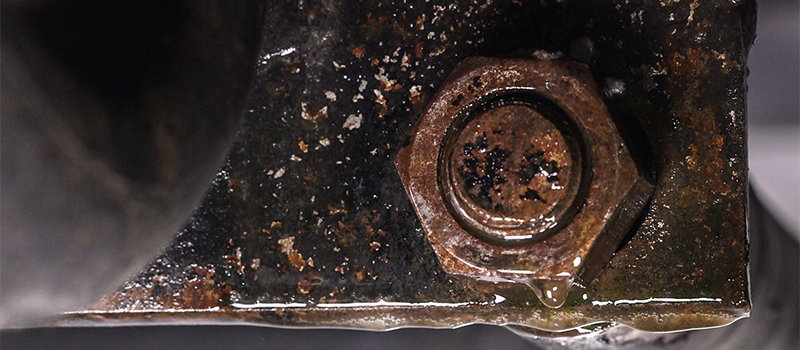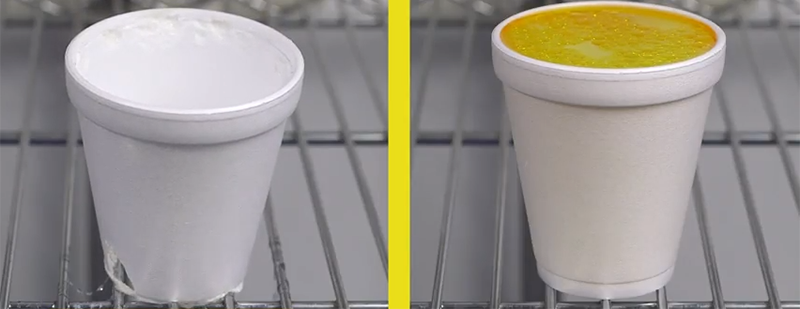Although many people might not know what penetrating oils are, they’re a vital tool for many in the MRO industry. Some might even say they’re the most important tool in the business.
There are many applications, especially in maintenance, where you need to remove mating parts – like a bolt and nut or fastener – that are frozen together by rust, surface contaminants, etc. If you can’t get them apart, you can’t make the repair.
There are many applications, especially in maintenance, where you need to remove mating parts – like a bolt and nut or fastener – that are frozen together by rust, surface contaminants, etc. If you can’t get them apart, you can’t make the repair.
For a penetrating oil to work, you need to get the friction-reducing agents (usually lubricants of some type) into the area where the threads or mating parts are bound up. That’s not always as easy as it sounds. Baked-on grease, grime, and crud sitting on top of a bolt and the material that’s being held together by the bolt presents a challenging obstacle. It doesn’t matter how good the lubricating or friction-reducing characteristics work if they can’t get to where the problem is.

Powerful solvents in a high-performance penetrating oil can dissolve and pierce surface contaminants that otherwise get in the way of getting the penetrant where it needs to be. This reduces friction and provides amazing improvement in removing frozen and corroded fasteners.
A top-of-the-line penetrating oil is powered by a large ratio of a very aggressive solvent. That’s why it works so well even without a lot of lubricant.
There are numerous penetrating oil options in the market that can be the right choice for various applications. It depends on what you want out of your penetrant.
Some don’t have any solvents; others have less powerful solvents. Sometimes, you might just want a lubricating oil that needs to get into a tight-fitting area, but there’s nothing in the way.
A penetrating oil that’s mostly lubricant with only a bit of solvent is at the other end of the spectrum. If you’re just looking to lubricate things, a penetrating oil like this can be the right choice.
If you need a penetrating oil that won’t immediately drip for vertical application, some options are formulated to gel for several seconds to prevent runoff, giving them time to seep into wherever they’re needed.
Penetrating oils also are made for many other specialized uses, including formulas that are non-flammable and non-conductive, ones that leave a lubricating layer of graphite behind, and others that are formulated to comply with stricter environmental regulations in places like California.

Other applications, such as food processing equipment, might call for a synthetic penetrating oil. Although they’re more expensive, they can be used in ways many other penetrants can’t.
Finally, one variety of penetrant doesn’t contain solvents at all. It has refrigerants that expand when released from the can, absorb a ton of heat, and get very cold on the surface they’re applied to. Temperatures as low as -70 degrees Fahrenheit on the fastener cause it to contract, creating micro fissures that let the lubricant in to do its job.
Refrigerants don’t come cheap, but they do get the job done without traditional solvents, which can damage some rubber and plastic parts and sometimes aren’t allowed because of environmental or other regulations.
Corrosion in a threaded assembly stops you from separating the parts, and so many things are held together with threaded fasteners. Your car is a prime example. It has countless threaded fasteners holding it together, and they’re going to be exposed to the elements, causing corrosion.
At some point, you might need to get the corroded assembly apart. That’s where penetrating oils come to the rescue.
You might have seen a demonstration of a penetrating oil in action eating through a layer of water inside a foam cup, and then penetrating the cup itself. In this demonstration, the cup represents the grease, rust, and corrosion the penetrating oil needs to get through in its real applications.

The top penetrating oils can get through the water and cup in just seconds, while others might never make it through. It’s examples like this that show the wide variation that exists among various penetrants on the market.
.png?width=131&height=58&name=image%20(40).png)

